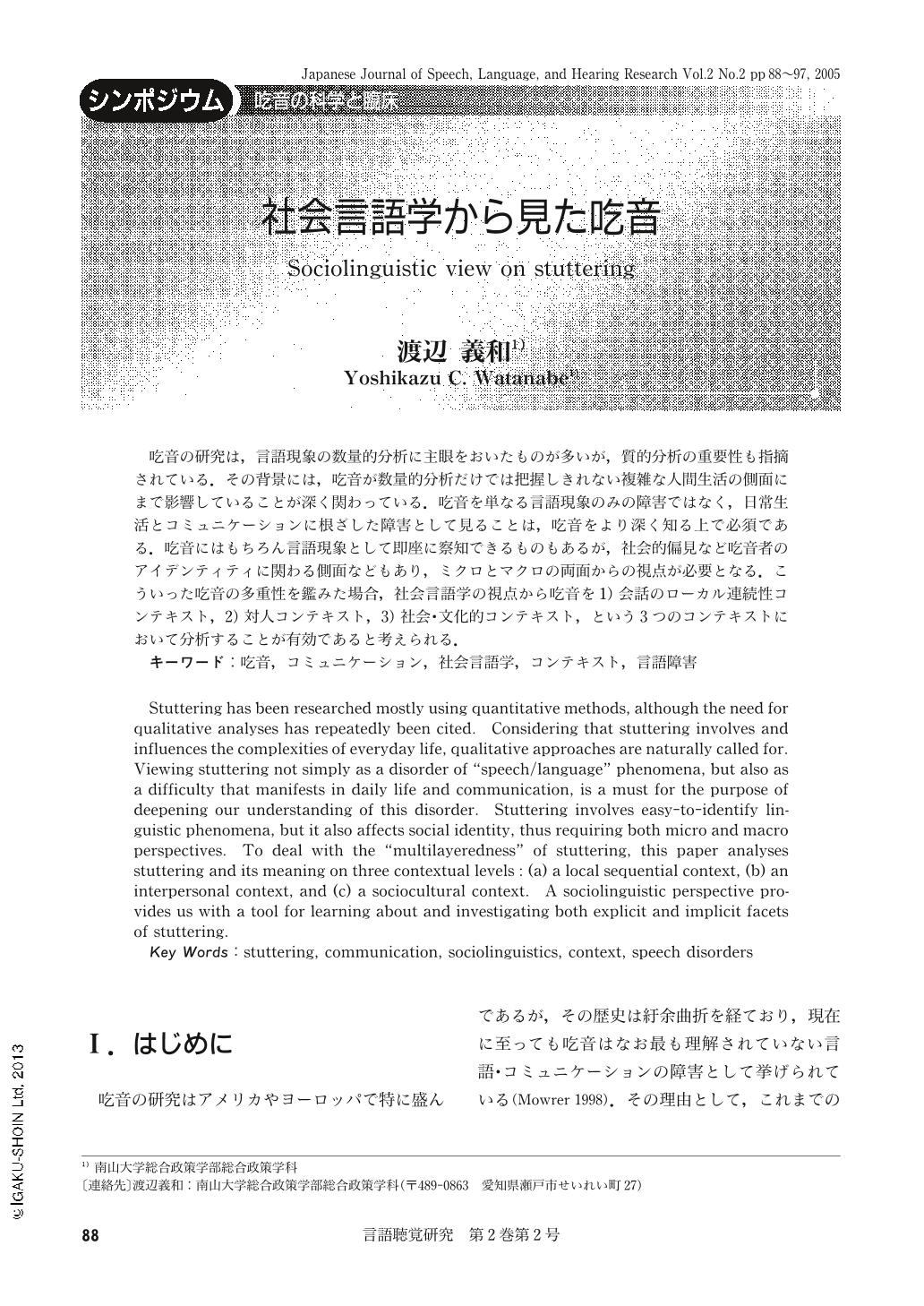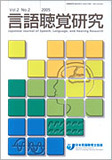Japanese
English
- 有料閲覧
- Abstract 文献概要
- 1ページ目 Look Inside
- 参考文献 Reference
吃音の研究は,言語現象の数量的分析に主眼をおいたものが多いが,質的分析の重要性も指摘されている.その背景には,吃音が数量的分析だけでは把握しきれない複雑な人間生活の側面にまで影響していることが深く関わっている.吃音を単なる言語現象のみの障害ではなく,日常生活とコミュニケーションに根ざした障害として見ることは,吃音をより深く知る上で必須である.吃音にはもちろん言語現象として即座に察知できるものもあるが,社会的偏見など吃音者のアイデンティティに関わる側面などもあり,ミクロとマクロの両面からの視点が必要となる.こういった吃音の多重性を鑑みた場合,社会言語学の視点から吃音を1)会話のローカル連続性コンテキスト,2)対人コンテキスト,3)社会・文化的コンテキスト,という3つのコンテキストにおいて分析することが有効であると考えられる.
Stuttering has been researched mostly using quantitative methods, although the need for qualitative analyses has repeatedly been cited. Considering that stuttering involves and influences the complexities of everyday life, qualitative approaches are naturally called for. Viewing stuttering not simply as a disorder of "speech/language" phenomena, but also as a difficulty that manifests in daily life and communication, is a must for the purpose of deepening our understanding of this disorder. Stuttering involves easy-to-identify linguistic phenomena, but it also affects social identity, thus requiring both micro and macro perspectives. To deal with the "multilayeredness" of stuttering, this paper analyses stuttering and its meaning on three contextual levels:(a) a local sequential context, (b) an interpersonal context, and (c) a sociocultural context. A sociolinguistic perspective provides us with a tool for learning about and investigating both explicit and implicit facets of stuttering.

Copyright © 2005, Japanese Association of Speech-Language-Hearing Therapists. All rights reserved.


